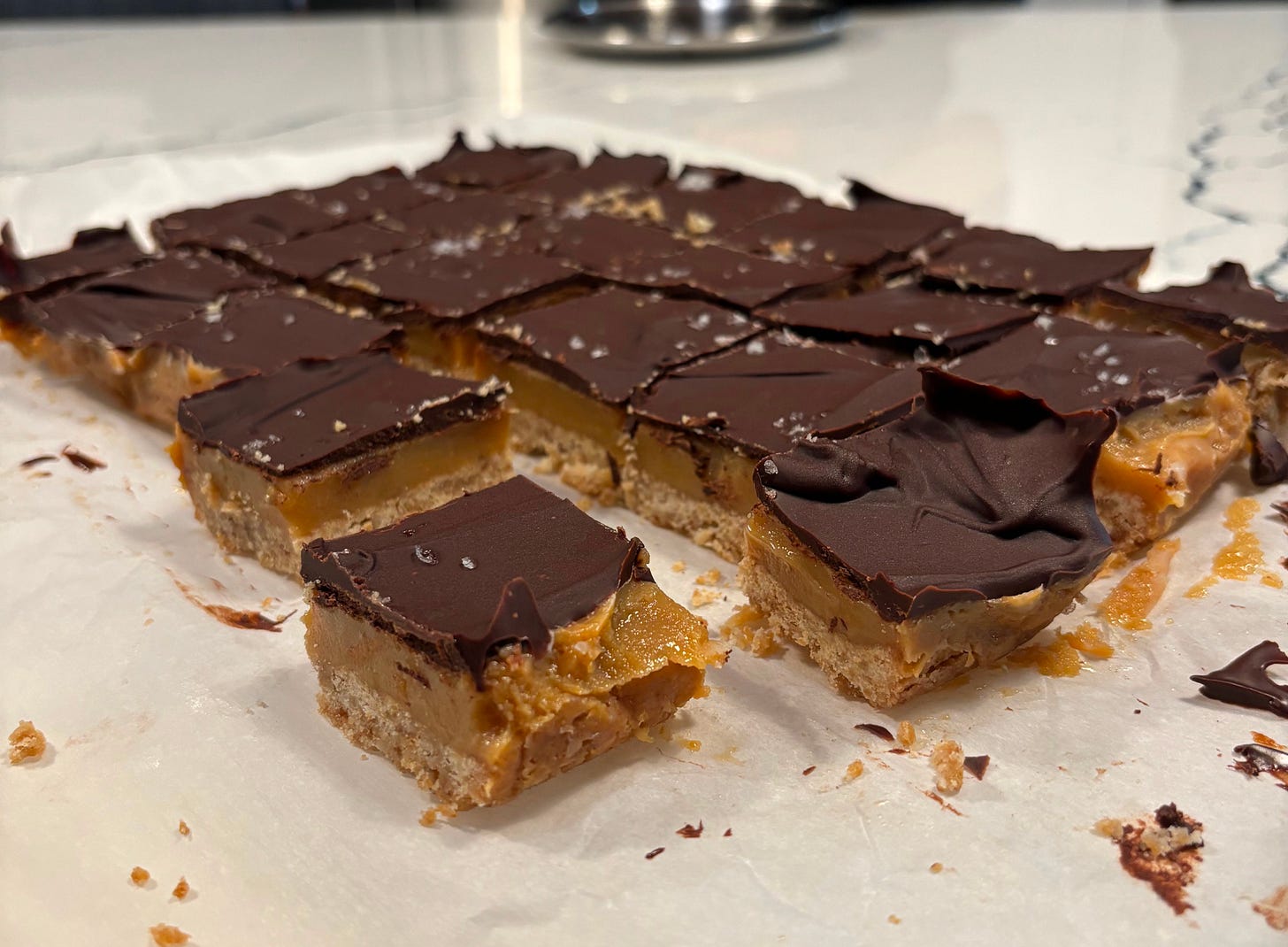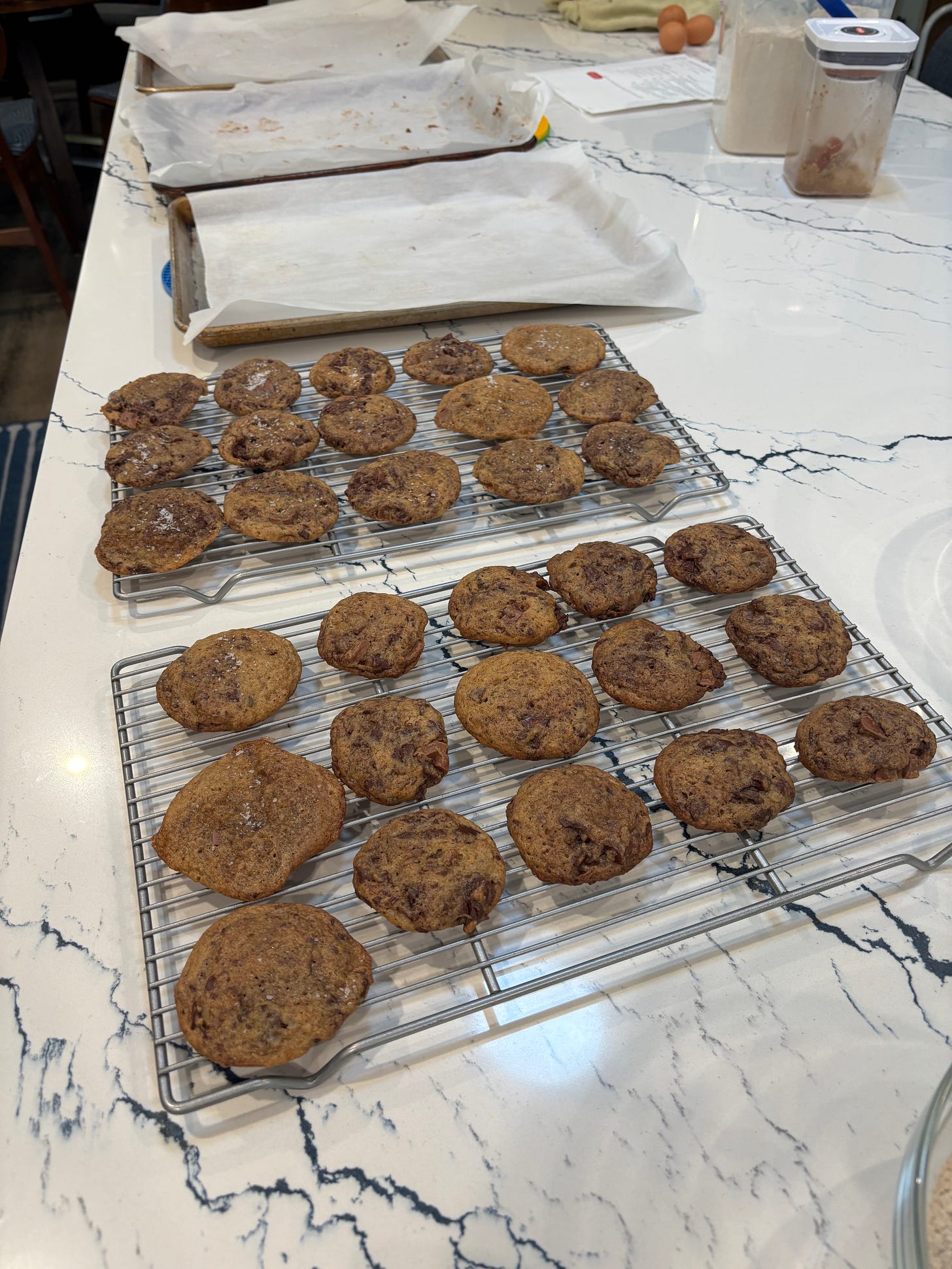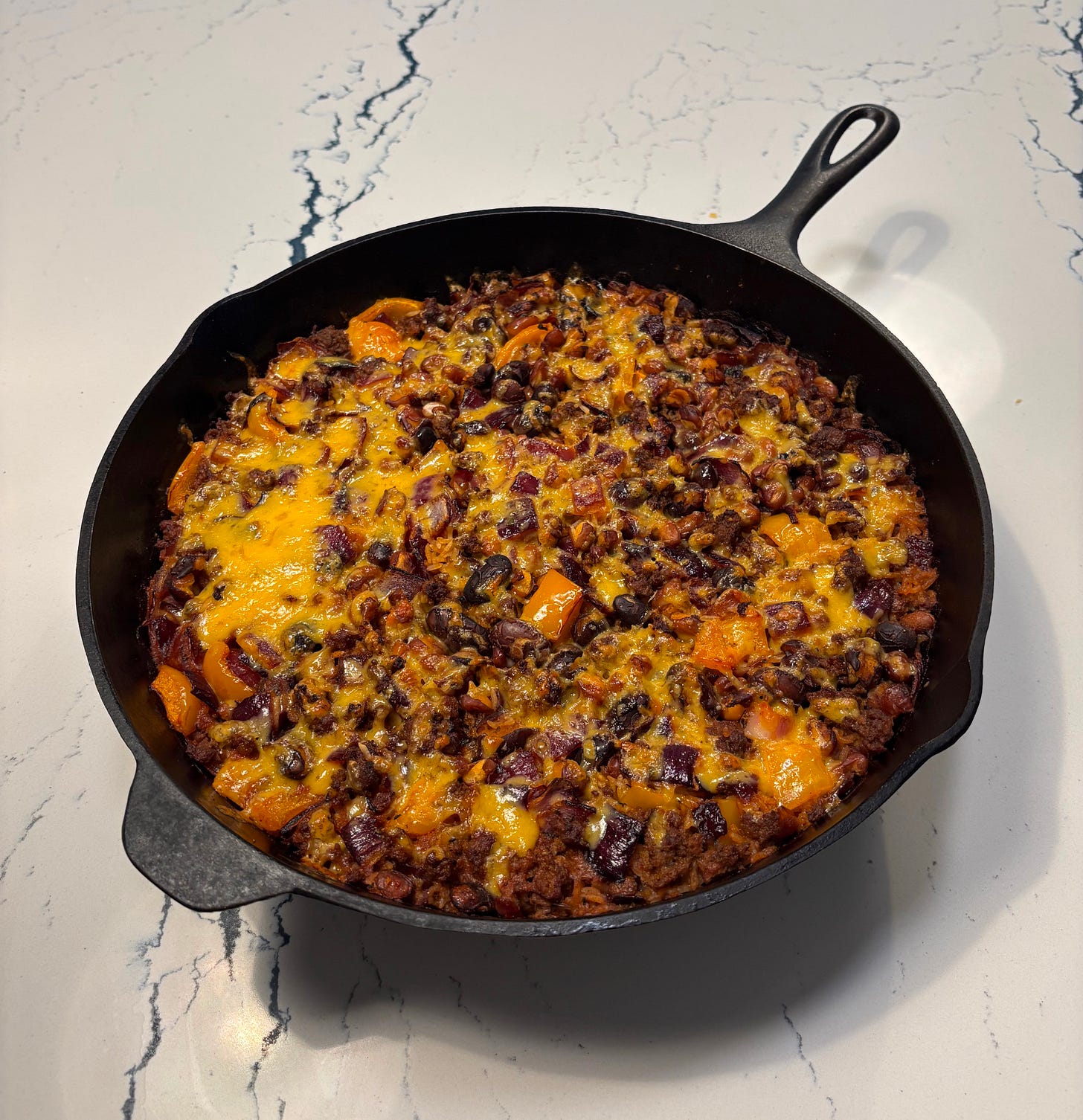I used to think that if you knew how to read, then you would know how to cook. After all, recipes are easy to find, and they would tell you how to cook. For any particular dish, there would be a list of ingredients, and a set of instructions of what to do (the method). Acquire the ingredients in the requisite quantities, do what the instructions tell you to do, and there you go — you cooked a dish.
To a large extent, that is true. A lot of the time, if you follow a recipe then you will end up with the promised dish. This might not happen if you didn’t follow the recipe exactly (did you substitute an ingredient? Or substitute one of the pieces of equipment? Or not quite understand one of the steps and thought ‘this’ll do’ but actually that didn’t do?). You might also not end up with the dish you hoped for if the recipe you followed wasn’t a good one — which is a crucial point I didn’t understand for a long time.
The internet is a wild and wonderful place full of all sorts of information, including recipes. When you come across information and news on the internet, you ought to think critically about the source: who is saying it, why are they saying it, are they trustworthy, what makes you think they should be trusted? This is true of recipes too. Where did you get the recipe from? What is their reputation, have you cooked from their recipes before, are their recipes tested thoroughly?
Not all recipes are created equal.
That is one part of recipe literacy. Like with news and information, I have shortcuts. Just as I can generally trust reporting by The Guardian and the ABC (that’s the Australian Broadcasting Corporation, Australia’s national public broadcaster, not the commercial American broadcasting company owned by Disney), there are a few sources of recipes that I think are generally reliable. RecipeTin Eats by Nagi Maehashi is one of them, which includes her website as well as two cookbooks, Dinner and Tonight. Another is King Arthur Baking. I’ve cooked and baked many things from RecipeTin Eats and King Arthur and they have, for the most part, been successes. The recipes are usually clear and easy to follow, and often have additional useful tips and notes.
There is, however, more to recipe literacy than just picking the right recipe. There is also reading a recipe, even when it’s from a trusted and reputable source, and knowing where you can and maybe should deviate so that you can make the dish even better. The kind of situation where if you followed the recipe exactly, it would probably be fine, but if you made just a few tweaks here and there, the dish would be excellent. This is the kind of literacy that comes from knowledge and experience, and I bet pro chefs have this without even thinking about all the extra knowledge they have. This is the kind of literacy I’m beginning to pick up, and it’s kind of cool. There are a few tweaks I often make now when I cook, even when it’s dishes from sources I know and trust.
Salt
This is a big one. From the book Salt Fat Acid Heat, and watching Epicurious videos* on YouTube, I’ve learnt a lot about salt: when to use it (basically all the time) and how much to use it (probably more than you think). Salt is like magic. It draws out flavours, makes food taste more like itself, makes meat tender and moist, makes sweet things even better. The lesson I’ve learnt in the past few years is to salt early and salt often. Salt at every step of cooking for savoury dishes (salt when you first start to saute the onions, and salt when you add everything else too) because that’s how you get layers and depth of flavour. If you’re cooking meat, salt the meat way before you plan on using it to give the salt time to work its magic.
I roast a chicken every couple of weeks, following the recipe in Dinner by Nagi Maehashi (RecipeTin Eats) and it is perfect every time. I make one change to what Nagi says to do. I salt the chicken hours before I cook (I’ll do it the night before if I remember, but just as often I’ll do it the morning of), and then when it comes to mixing the seasoning for the chicken, I’ll leave out the salt since it has already been salted.
The same is true of chicken noodle soup and chicken pot pie — I follow both recipes pretty much exactly, but I will salt the chicken the morning of despite neither recipe saying to do so.
The same issue of insufficient salting comes up with baking, too. Most recipes for baked sweets have a pinch of salt in the ingredient list, but sometimes they don’t. Nagi’s recipe for caramel slice is almost perfect in every way except that there is no salt in it. I made it once following her ingredient list exactly and it was fine, but the next time I made it I added salt to the base and the filling (not much, only about ¼ or ½ teaspoon each) and it was even better.
Another recipe that suffered from the same problem was apple pie bars by King Arthur. I wrote about them here and they were fantastic; truly one of my favourite things I’ve ever made. There are three components to them: the crust, the filling, and the streusel topping. In the original recipe, there is salt in the crust, but not the filling or the topping. So I added a bit of salt to the filling and the topping and the end result was great.
It makes me feel like a real chef, liberally sprinkling salt everywhere like it’s fairy dust. Magic.
Sugar
By contrast, instead of adding more than what the recipe says, with sugar I’ll do the opposite. I’ve written before about how I don’t like things to be too sweet, and I’d read an article that said you can basically reduce the sugar by 75% in most recipes without affecting the chemistry of the bake. So that’s pretty much what I do now, especially if the recipe is from a source where I’ve made their things before and found them to be too sweet. For every King Arthur recipe I try, I automatically just use 80% of the sugar amount listed and it has always turned out fine (sometimes even still a touch too sweet for my liking).
Heat
There was a new recipe I tried last week: one-pan cheesy beef taco rice bake. The title is a bit cumbersome but the dish is exactly what it says on the tin: there’s beef, rice, cheese, taco seasoning, uses one pan, and is baked. It was pretty good, but I have an idea of how I’ll adjust it next time. I thought of the adjustment as I was cooking, but figured I’d try the recipe as is on the first attempt.
The part that I was unsure of and will change in the future comes at step one: ‘heat oil over medium heat and cook the beef for five minutes until browned’. Now, a long time ago, one of the home cooks on Epicurious,
, said a line that has stuck with me: ‘nothing bad happens on medium’. I think of her often when I’m cooking something on medium, and if I’m not following a recipe and just making things up as I go, there is a lot that happens on medium. It’s a nice, comfortable, forgiving place to be. Safe.But even though nothing bad happens on medium, nothing good happens on medium either (sorry, Emily). There are some things you need high for. You need it to bring dried beans to a roiling boil; you need it to get nice brown grill marks on a panini; you need it to sear a steak. You need it to brown meat. With this beef taco rice bake, I cooked the meat on medium for the five or so minutes as instructed, and while it did brown, it never got to what I now think of as proper brown: dark brown with good, delicious caramelisation. On medium, it got to be not-red, which technically is brown. But it was only a light brown, not the darker colour that has the most depth and flavour. I did turn the heat up in the end, but I should have done it earlier.
Recipe literacy
I’m beginning to think that cooking isn’t just about reading literacy, and that there is a particular kind of recipe literacy that you acquire the more you cook and experiment. Regular literacy definitely gets you started when it comes to cooking. If you can read recipes and know the basics of what the words mean, what the ingredients are, how to follow the instructions, then it’s a pretty good start. That will get you a lot of the way there.
But then you can go a step further and attain recipe literacy. With recipe literacy, you have the ability to read and evaluate a recipe and say ‘yes, I could do that but if I did this it would be better’. With recipe literacy, you would know what to modify, what recipes could be combined, what substitutions could be made.
My recipe literacy isn’t as good as my regular reading literacy yet, but I’m working on it.
*It’s not one particular video or one particular chef on Epi that talks about salt; they basically all talk about it, all the time, with everything.





Hahah, nothing bad happens on medium is meant to be a mantra for when you're quickly scanning the recipe for what you're supposed to do next! I encourage you to apply heat of all temperatures as appropriate!